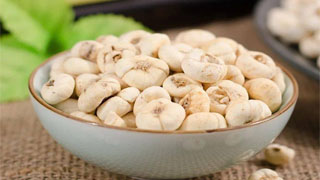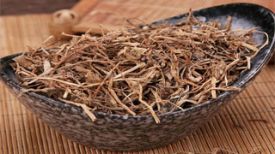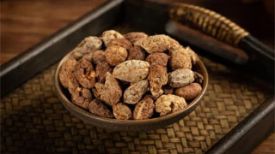
1. Alias
Pingbei, Beimu, Pingbei.2. Plant morphology
Perennial herb. The bulb is flattened and round, with a stem height of 40-60 centimeters. Impeller growth or opposite growth, the upper and middle leaves often alternate, linear, 9-16 cm long, 2-6.5 mm wide, with no or slightly curled tips. There are 1-3 flowers, purple in color, with light colored small squares. The top flower has leaf shaped bracts 4-6, and the tip is extremely curled. The outer whorl is about 3.5 cm long and 1.5 cm wide, and the inner whorl is slightly short and narrow. The nectaries nest on the back and protrude significantly. The stamens are 6, the style has papillae, the stigma is 3 deeply lobed, and the lobes are 5 mm long. The capsule is broadly oblong with rounded edges. The flowering period is from May to June.
3. Origin distribution
Born under forests, meadows, or river valleys. Mainly produced in Heilongjiang, Jilin, Liaoning, etc., with a large amount of cultivation.
4. Harvesting and processing
Excavate in spring, remove the outer skin, fibrous roots, and sediment, and dry in the sun or at low temperatures.
5. Characteristics of medicinal herbs
It has a flattened spherical shape, with a height of 0.5-1 cm and a diameter of 0.6-2 cm. The surface is milky white or pale yellow white, with two outer scales and leaves that are thick, similar in size or slightly larger in size. The top is slightly flat or slightly concave, often slightly cracked; The central scales are small. Solid and brittle in texture, with a powdery cross-section. Mild odor, bitter taste.
6. Sexual Taste Returning to the Classics
Slightly cold in nature, bitter and sweet in taste. Return to the lung meridian and heart meridian.
7. Effect and Function
Clearing heat and moistening the lungs, resolving phlegm and relieving cough. Belonging to the subcategory of phlegm resolving, cough relieving, and asthma relieving drugs, it is a clearing and heat relieving phlegm medicine.
8. Clinical application
3-9 grams, grind powder and take 1-2 grams at a time. Used to treat lung heat and dry cough, dry cough with less phlegm, yin deficiency and excessive coughing, coughing up phlegm with blood.
9. Pharmacological research
It has a certain inhibitory effect on both peptic ulcers and stress ulcers; It also has inhibitory effects on the central nervous system, lowers blood pressure, and has expectorant properties.
10. Chemical composition
The bulb contains components such as berberine -3 β - D-glucosinolate, berberine, berberine, berberine A, berberine B, berberine C, berberine glycoside, berberine B, berberine A, berberine, berberine, berberine, berberine, berberine, berberine, berberine, berberine glycoside, berberine methyl ether, alpha eugenol, gamma elemene, etc.
11. Usage taboos
Not suitable for use with Sichuan black, Sichuan black, grass black, grass black, and aconite.
12. Compatibility prescription
① Treatment for chronic bronchitis: 150 grams each of Fritillaria, Lily, Su Ye, Schisandra, and Platycodon grandiflorus. Boil twice in water, concentrate to 5000 grams, and add 1000 grams of sugar. Take 15-20 milliliters each time, three times a day. (National Compilation of Chinese Herbal Medicines)
② To treat tuberculosis cough with blood in sputum: 35 grams of Fritillaria thunbergii, 50 grams of white powder, and 25 grams of white sugar. Grind the powder together, take 10 grams each time, twice a day. (Flora of Changbai Mountain)
③ To treat Yin deficiency, fever, cough, and low phlegm: 10g Pingbeimu, 10g Zhimu, and 5g Licorice. Boil it in water. (Flora of Changbai Mountain)
④ Treatment for lymphatic tuberculosis: 15 grams of Fritillaria, 20 grams of Scrophularia, and 25 grams of oysters. For fine powder, honey pills, weighing 10 grams, take 1 pill each time, twice a day. (Flora of Changbai Mountain)
⊙ The content of the article is for clinical reference only. Non TCM professionals are not allowed to test drugs.


